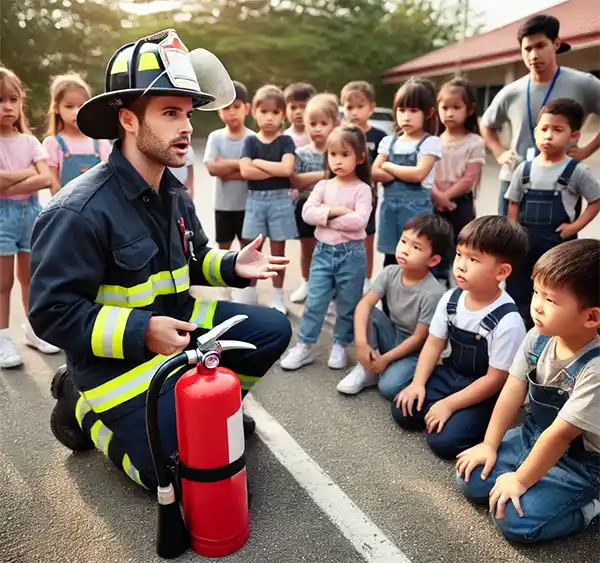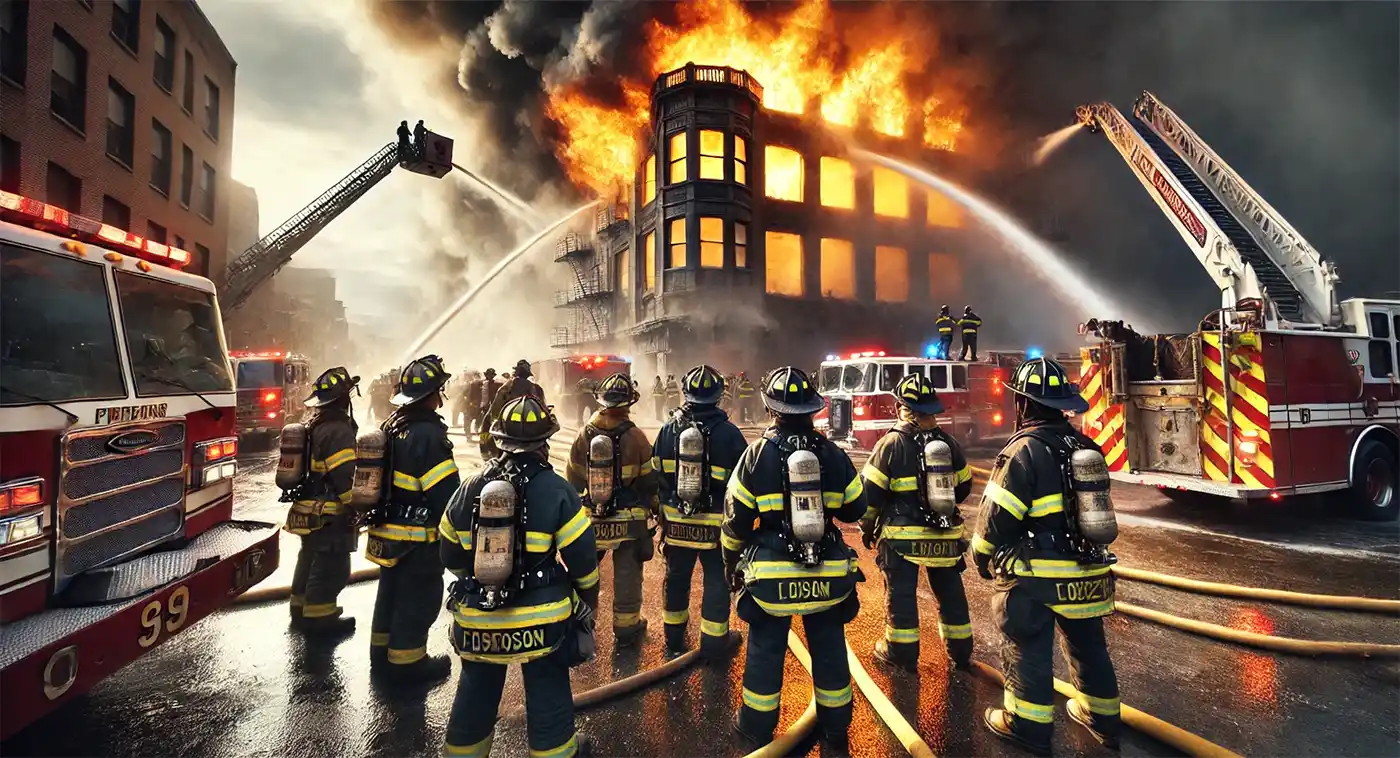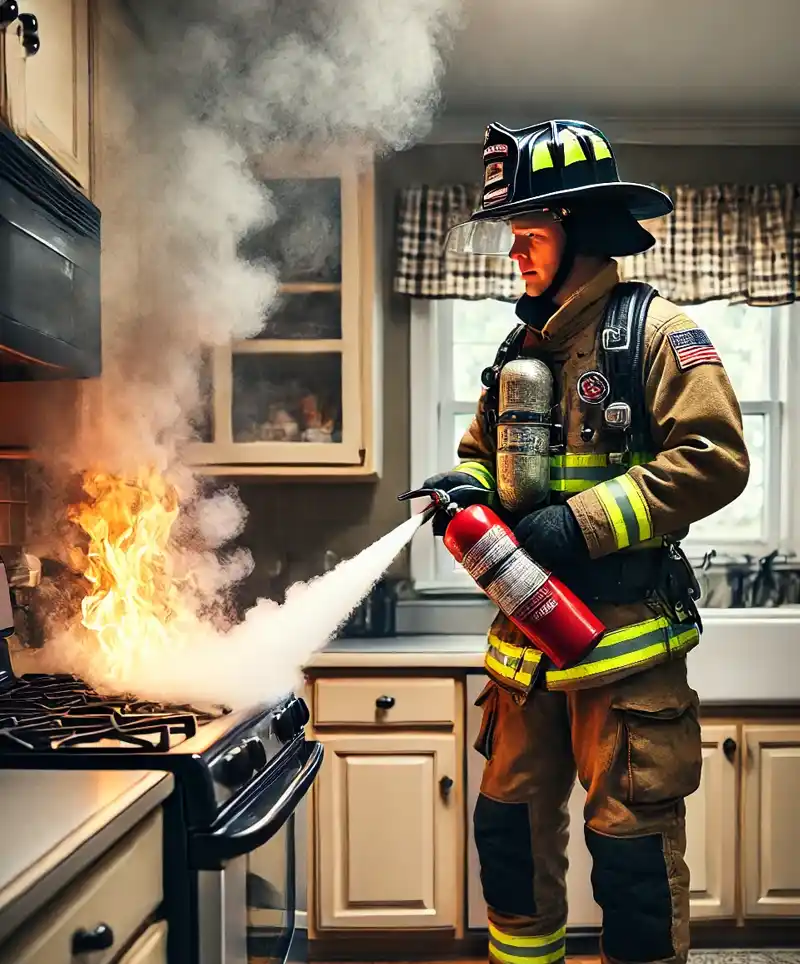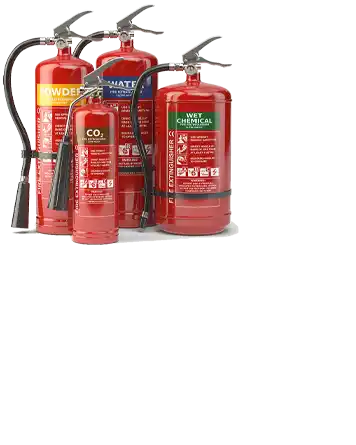Stop, Drop, and Learn!
As October rolls around, there’s one thing we can all agree on: it’s better to prevent a fire than to put one out. National Fire Prevention Week, observed every year in the second week of October, is our annual reminder that fires are not just something that happen to other people—they can happen to us too. But the good news? With a few simple steps, you can avoid ever having to yell, “Where’s the fire extinguisher?!” while simultaneously attempting to remember where you left the cat.
The Origins of Fire Prevention Week
National Fire Prevention Week commemorates the Great Chicago Fire of 1871, which wasn’t so great if you think about it. The fire raged from October 8 to October 10, destroying more than 17,000 buildings and leaving thousands of people homeless. Legend has it that a cow kicked over a lantern in Mrs. O’Leary’s barn, starting the fire. While historians have since debunked this story, the importance of fire prevention remains just as relevant today as it was back then.
 In 1925, President Calvin Coolidge declared Fire Prevention Week a national observance, making it the longest-running public health campaign in U.S. history. His message? Don’t be like Mrs. O’Leary’s cow—take steps to prevent fires before they start.
In 1925, President Calvin Coolidge declared Fire Prevention Week a national observance, making it the longest-running public health campaign in U.S. history. His message? Don’t be like Mrs. O’Leary’s cow—take steps to prevent fires before they start.
Simple Tips to Keep Your Home Safe
Let’s be real—no one wakes up thinking, “Today’s a great day for a fire.” But fires don’t wait for convenient moments to happen. The key to avoiding them is prevention. And it’s not hard to do!
- Test Those Smoke Alarms: If you haven’t checked your smoke alarms since you set the clocks back in the spring, now’s the time. A working smoke alarm cuts your chances of dying in a house fire by nearly half. So, stop pretending the "low battery" chirp is your house learning to sing and swap those batteries already.
- Blow Out Candles Before You Leave the Room: Sure, candlelit dinners are romantic, but leaving the house with a candle still burning isn’t. If you must have that cozy glow, try battery-powered candles. They give off the same ambiance without turning your home into a scene from Backdraft.
- Cook Like You Mean It (and Stay in the Kitchen): Kitchen fires are one of the leading causes of house fires. So, whether you’re perfecting your soufflé or just reheating last night’s pizza, stay near the stove. No one wants to explain to their insurance company that their casserole was just too "lit."
- The 3-Foot Rule for Heaters: Portable heaters are great for keeping warm, but keep anything flammable at least three feet away from them. No one wants to discover their favorite blanket’s melting point.
Fire Drills Aren’t Just for School Kids
We all remember the fire drills at school—filing out of the classroom in single file, hoping the alarm wouldn’t interrupt lunchtime. But here’s the thing: fire drills are just as important at home. Do you know two ways to escape every room? Do your kids know how to get out? And most importantly, does everyone know the meeting point outside?
Here’s a little fire drill to-do list that’s way more fun than algebra:
- Identify two ways out of every room: Yes, this includes that tiny bathroom window. You don’t have to use it unless you have to.
- Practice the crawl: Smoke rises, so teach your family to stay low. Think of it as a great excuse to turn fire safety into a game of limbo.
- Get to the meeting spot: Pick a spot outside where everyone will meet in case of a fire. And no, "behind the couch" does not count.
Fun (But Seriously Important) Fire Facts
- You’ve got two minutes: That’s right—once your smoke alarm goes off, you’ve got an average of two minutes to escape safely. You might want to rethink grabbing your entire comic book collection.
- 60% of fire deaths occur in homes with no working smoke alarms: That little battery-operated device on your ceiling isn’t just decoration. Make sure it works.
- Close before you doze: Sleeping with your bedroom door closed can actually slow the spread of smoke, heat, and fire. Plus, it gives you a solid excuse to shut out the dog’s snoring.
Fire Extinguishers
It’s all fun and games until something bursts into flames. But when that happens, knowing how to use a fire extinguisher is pretty handy. Most people own one, but when the moment comes, they look at it like it’s an ancient artifact. Here’s a tip: remember the word PASS—it’ll help you in a fire extinguisher emergency (and no, it’s not something you say when you don’t want to play charades).
- P: Pull the pin. Easy enough, right?
- A: Aim at the base of the fire. Don’t just wave it around like you’re swatting a fly.
- S: Squeeze the handle. Not too hard, but not like you’re handling fine china, either.
- S: Sweep side to side. Cover the whole fire, or else it might just mock you and reignite.

Heroes in Helmets
It would be remiss to talk about Fire Prevention Week without giving a shoutout to the brave men and women who rush into burning buildings while the rest of us are running out. But let’s be clear—firefighters do so much more than just dousing flames. They’re first responders to all kinds of emergencies, from medical crises to car accidents and even the occasional animal rescue. Yes, that story about firefighters rescuing cats stuck in trees? It’s not a myth—it happens more often than you’d think. (And let’s be honest, no one is climbing a tree to rescue a grumpy cat unless they’re really dedicated to the job.)
When disaster strikes, firefighters are among the first to arrive, equipped with gear that weighs as much as a small person. Their helmets? Not just for show. They protect these heroes from falling debris, extreme heat, and more. The tools they carry—axes, hoses, and sometimes the Jaws of Life—are like an extension of their own hands, allowing them to save lives in situations most of us can’t even imagine.
Firefighters undergo extensive training to prepare for any situation, and their bravery knows no bounds. From extinguishing massive wildfires to responding to house fires in the middle of the night, these heroes put themselves on the line every day. And if that wasn’t enough, many firefighters also serve as paramedics, delivering life-saving care before anyone else can get there. Talk about multi-tasking.
 So, during Fire Prevention Week, if you see a firefighter, give them a wave or a thank you. And if you really want to show your appreciation, cookies or a nice meal wouldn’t hurt. After all, they’re out there protecting us from danger while we’re safely snoozing under the covers, pretending we didn’t hear that fire drill alarm.
So, during Fire Prevention Week, if you see a firefighter, give them a wave or a thank you. And if you really want to show your appreciation, cookies or a nice meal wouldn’t hurt. After all, they’re out there protecting us from danger while we’re safely snoozing under the covers, pretending we didn’t hear that fire drill alarm.
National Fire Prevention Week isn’t just about handing out pamphlets and pointing at smoke alarms—it’s about making sure we’re all a little more prepared, a little more vigilant, and a lot more fire-conscious. Because let’s face it, nothing ruins your day like accidentally setting your kitchen curtains on fire because you left a pizza box on the stove. So, remember to check those smoke alarms, practice your fire drills, and keep those candles in check. And maybe, just maybe, let’s all agree that fire safety is no joke—even if it’s a little fun to talk about.
Please Share our Content






 In 1925, President Calvin Coolidge declared Fire Prevention Week a national observance, making it the longest-running public health campaign in U.S. history. His message? Don’t be like Mrs. O’Leary’s cow—take steps to prevent fires before they start.
In 1925, President Calvin Coolidge declared Fire Prevention Week a national observance, making it the longest-running public health campaign in U.S. history. His message? Don’t be like Mrs. O’Leary’s cow—take steps to prevent fires before they start.
 So, during Fire Prevention Week, if you see a firefighter, give them a wave or a thank you. And if you really want to show your appreciation, cookies or a nice meal wouldn’t hurt. After all, they’re out there protecting us from danger while we’re safely snoozing under the covers, pretending we didn’t hear that fire drill alarm.
So, during Fire Prevention Week, if you see a firefighter, give them a wave or a thank you. And if you really want to show your appreciation, cookies or a nice meal wouldn’t hurt. After all, they’re out there protecting us from danger while we’re safely snoozing under the covers, pretending we didn’t hear that fire drill alarm.








 "Sláinte!" is a traditional Irish expression used as a toast, equivalent to "Cheers!" in English.
"Sláinte!" is a traditional Irish expression used as a toast, equivalent to "Cheers!" in English.